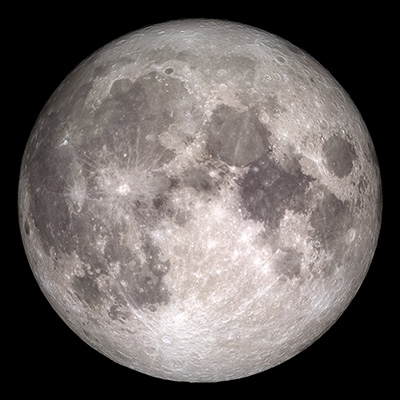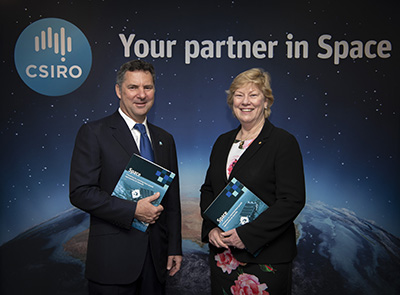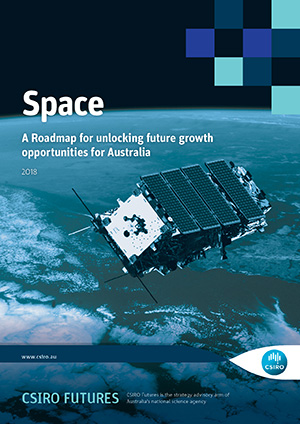CSIRO wants Australian space industry to back ‘Moon base’
AUSTRALIA’s national science agency, CSIRO, is encouraging the rapidly developing domestic space industry to join international partners in a bold project to establish a permanent human base on the Moon.
Australian Space Agency chief – and former CSIRO chief executive – Megan Clark and current CSIRO CEO Larry Marshall are leading the call. They say a sector-wide ‘lunar challenge’ would be “an exciting opportunity for Australian industry to contribute to a common goal aimed at growing the size of our domestic space industry to $12 billion by 2030”.
Dr Marshall said it would also be used to inspire future generations with a new grand challenge, just as the US Apollo program did in the 1960s and 1970s. 
According to Dr Clark and Dr Marshall, meeting the lunar base challenge would involve Australian researchers and industry building capabilities in autonomous robotic systems; developing ‘in-situ resource utilisation’ on the Moon; new ways of managing habitat and life support systems; and finding new solutions in power and propulsion systems (see panel story below).
An international coordination group already exists. It has an aim to expand human exploration and presence in low Earth orbit, and on the Moon and Mars, over the next two decades.
Dr Marshall said Australian space sector support for the lunar challenge would be an opportunity to grow our existing relationships with global partners, including international space agencies.
The industry-wide appeal was launched in September by the Industry, Science and Technology Minister, Karen Andrews at the 18th Australian Space Research Conference on the Gold Coast.
The report Ms Andrews released – Space: A Roadmap for unlocking future growth opportunities for Australia – highlights Australia’s unique strengths and geographic advantages and ways to increase Australia’s share of the international space sector.
“Our space roadmap charts a course for economic growth using space, and champions a new era of space exploration to inspire our children with the power of science to make the ‘impossible’ possible,” CSIRO’s Dr Marshall said.
“Our existing space industry is built on a foundation of trust earned 50 years ago when we enabled the world to see mankind touch the Moon – that kind of inspiration is a key ingredient in supercharging growth in new industries, new jobs, new STEM talent and developing a dynamic nation where the sky is no longer the limit.”
REPORTED PATHWAYS
Developed in consultation with industry, the Space report presents three key opportunity areas for potential development, which can support the growth of Australia’s ‘space economy’. 
By building capabilities in observing Earth from space, satellite communications, and positioning, navigation and timing data, Australia can grow new service-based businesses that address issues such as disaster and water management, according to the CSIRO.
By taking advantage of Australia’s geographic position in the southern hemisphere, the space sector can further its work with international programs that track objects in space, manage space debris, and enable deep space communication.
By harnessing Australia’s diverse industrial and research strengths across astronomy, mining, manufacturing, medicine, agriculture and robotics for Earth-based industry, the country can support space exploration and deep space gateway habitats to safely conduct robotic and human missions.
“CSIRO’s unique position creates a bridge between research and industry to deliver breakthrough innovation to Australian SMEs and start-ups across the space value chain,” Dr Marshall said.
Australian Space Agency’s Dr Clark endorsed the roadmap.
“This roadmap introduces some key scientific opportunities which Australia can utilise to drive engagement and growth across the space value chain,” Dr Clark said.
“Together, the Australian Space Agency, CSIRO and other key partners will drive the full potential of our nation’s capabilities and competitive advantages, optimising our R&D opportunities and targeting growth across the space value chain to build a space sector of which all Australians can be proud.”
Dr Marshall said CSIRO has deep expertise and a strong track record of engagement across the space sector – developed over 75 years – that included working with small-to-medium enterprises as well as with international space agencies and multinational corporations.
The new roadmap was developed by CSIRO Futures, the strategic advisory arm of CSIRO, following extensive industry consultation with nearly 150 business, government and technology representatives.
NEW AREAS OF RESEARCH
Autonomous robotic systems: Deep space exploration missions are hostile environments for humans, so developments in machine learning, AI and robotics are essential to gather data and supporting analytics.
In-situ resource utilisation: Using local resources at the exploration destination could require mapping and prospecting, processing of new minerals and materials and additive manufacturing capabilities.
Habitat and life support: Deep space exploration missions require innovative systems for all aspects of habitat and life support including food, medicine and shelter and waste management.
Power and propulsion: Technology solutions suitable for in-situ power generation, energy harvesting and storage, engine and fuel options for rockets and in-space propulsion.
|
Read Space: A Roadmap for unlocking future growth opportunities for Australia. |
Watch the CSIRO Space Road Map video:
|
ends


